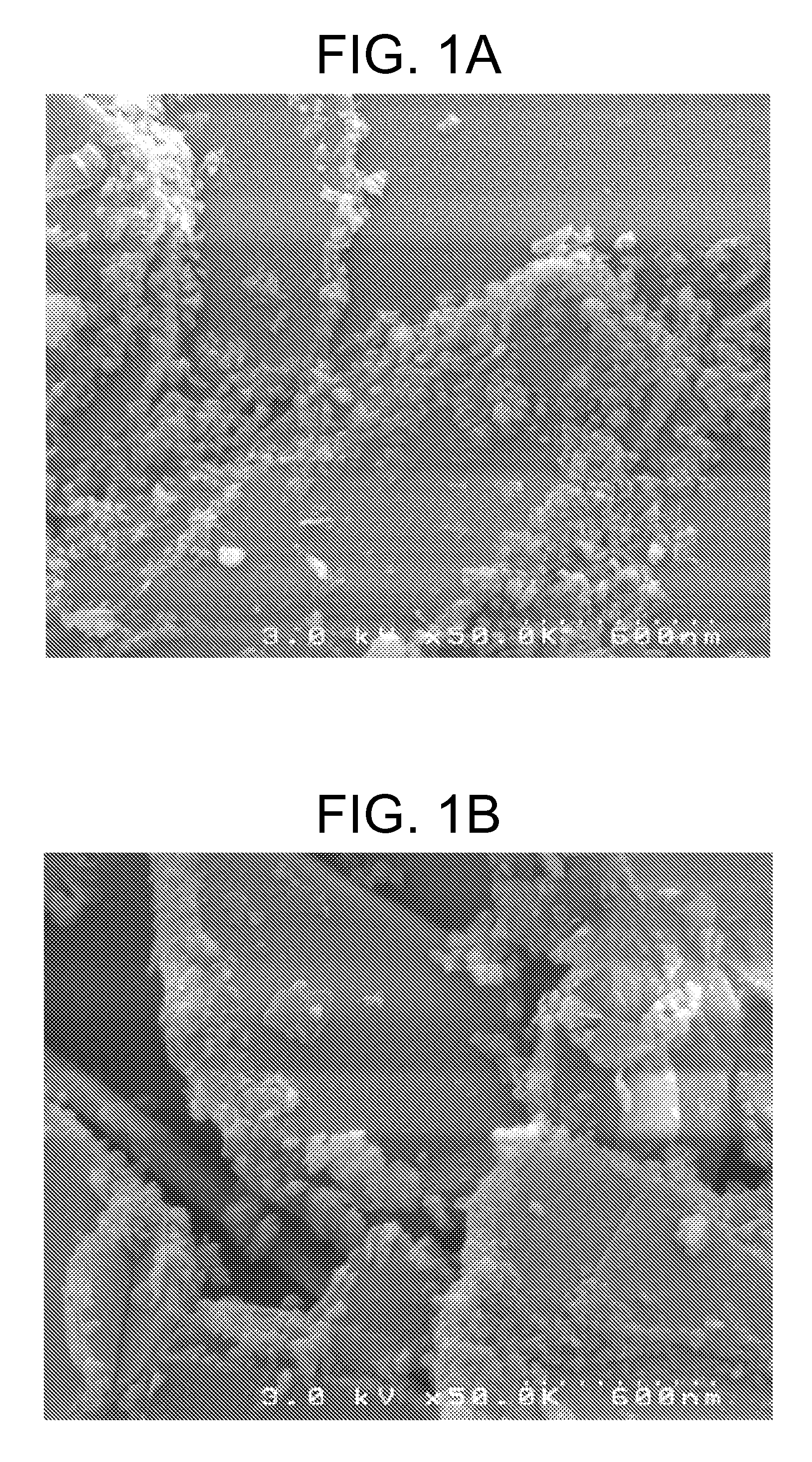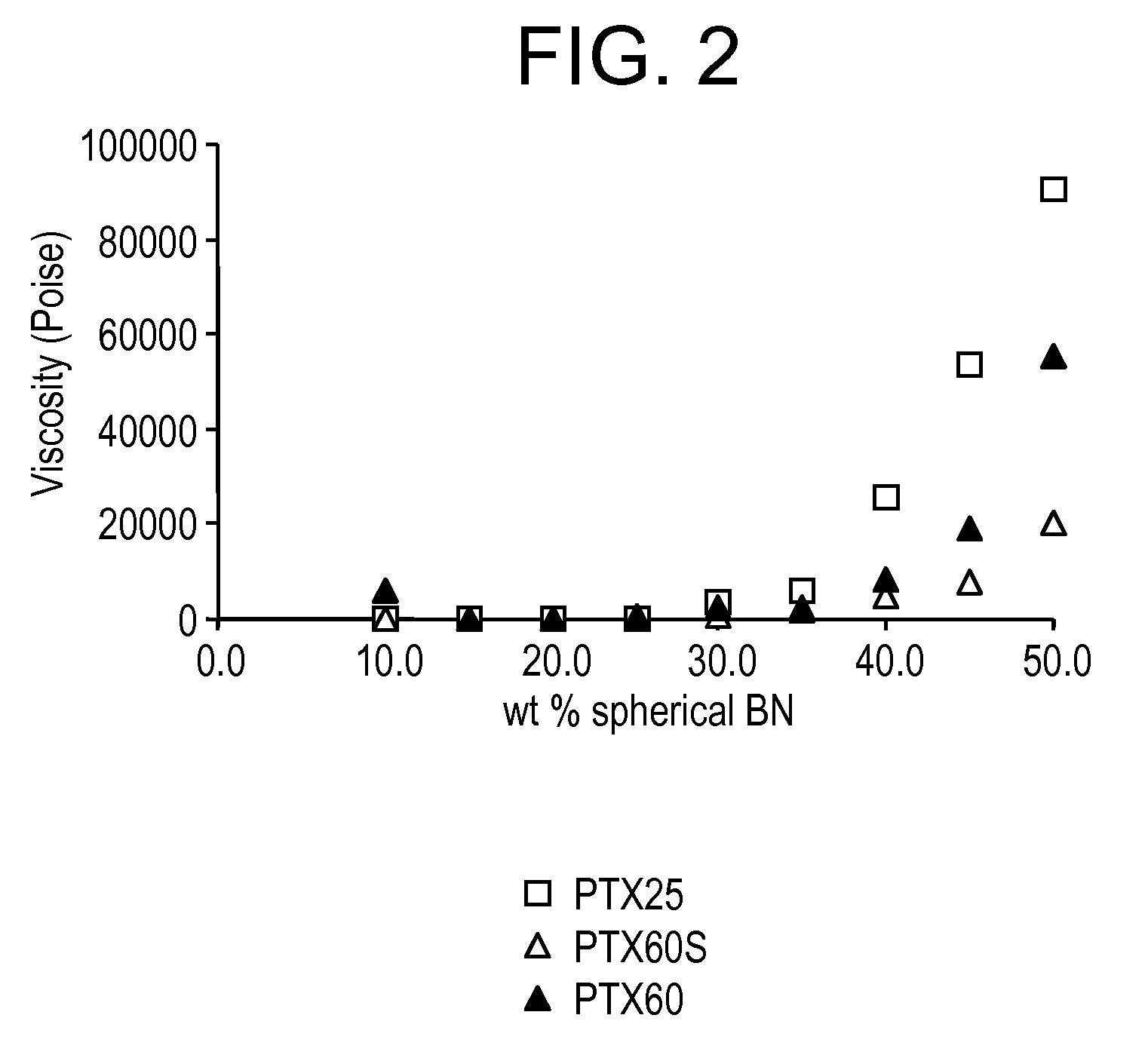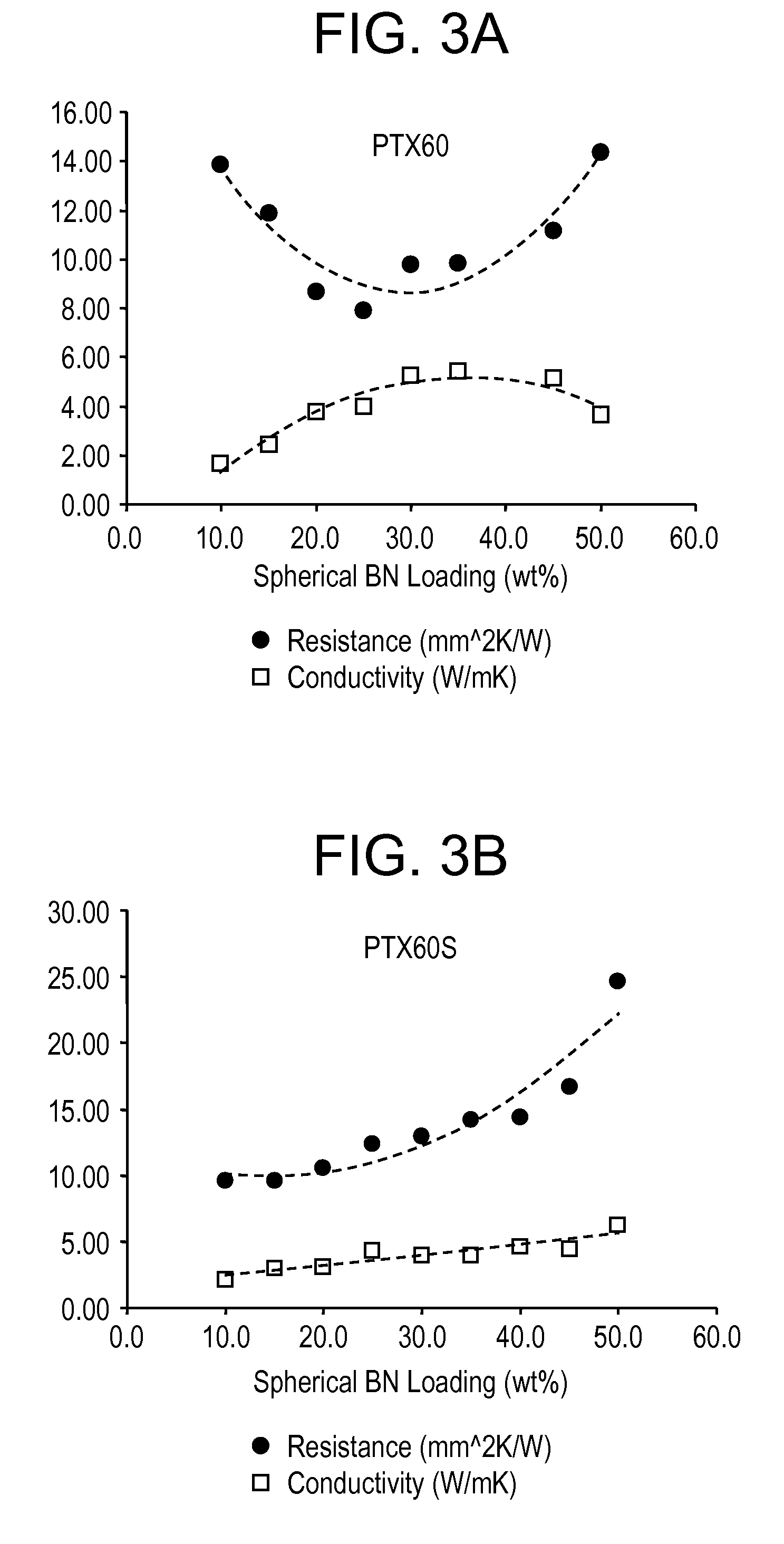Enhanced boron nitride composition and compositions made therewith
a technology of boron nitride and composition, which is applied in the direction of natural mineral layered products, synthetic resin layered products, solid-state devices, etc., can solve the problems of poor theological properties of blended materials and difficulty in dispense from mechanical dispensers such as syringes
- Summary
- Abstract
- Description
- Claims
- Application Information
AI Technical Summary
Benefits of technology
Problems solved by technology
Method used
Image
Examples
example 1
[0070] In this example, BN particles are surface-functionalized in an one-step process with a wax type material, Sorbitan (Liposorb-S), to increase the number of reactive sites on the BN surface. The coating is applied by blending the BN powder (PTX60 or PTX25) with 3 wt. % sorbitan for 15 minutes in a V-blender (forming PTX60S or PTX25S). During the V-blending, the D50 of PTX60 is reduced from 60 micron to 45 micron since the shear from blending causes the spheres to break and diminish in average size. The carbon and oxygen content increases significantly with the coating, as well as the tap density.
[0071]FIG. 2 illustrates the change in viscosity of coated vs. uncoated BN particles with the coating layer helps reduce the viscosity. Tables 1 and 2 show values obtained from coated BN powder (with increased reactive sites) vs. uncoated BN powder.
TABLE 1PTX60SPTX25SOxygen (%)1.3921.42Carbon (%)1.8811.87SA (m2 / g)——Sol. Borate (%)0.050.06D10 (microns)11.649.50D50 (microns)43.9122.92D...
example 2
[0073] In this example, BN reactive surface level is increased via an oxidation route of calcination. PTX60 spherical BN is placed in a ceramic crucible and then placed in a Lindberg / blue oven (model # BF51828C-1). The oven is set to ramp from 25° C. to 850° C. in 2 h, then stay at 850° C. for 8.5 h, and finally ramp down to 25° C. over 2.5 h. The resulting powder looks unchanged, but upon testing, showed an increase in surface oxygen content from <0.5% to almost 3%. The sample is used for subsequent surface functionalization step with a variety of organic reagents, and labeled as “Sph BN-OH”.
example 3
[0074] In this example, BN reactive surface level is increased with the use of an inorganic compound as a coating layer. Spherical BN (PTX60) is blended using a V-blender for about 15 to 60 minutes with Ken-React® KZ TPP® zirconate, forming zirconate coated BN (PTX60Z); Ken-React® KR-41B titanate, forming titanate coated BN (PTX60Ti). Spherical BN is wet-blended with aluminum acetate and subsequently dried forming alumina-coated BN (Sph BN-AlOx). The samples are subsequently used in the surface functionalization step as described below.
[0075]FIGS. 1A and 1B are SEM showing images of n-AlOx coated sph BN, with the n-AlOx particles being only on the edges of the BN platelets, covering less than 10% the surface.
PUM
| Property | Measurement | Unit |
|---|---|---|
| temperature | aaaaa | aaaaa |
| temperature | aaaaa | aaaaa |
| particle size | aaaaa | aaaaa |
Abstract
Description
Claims
Application Information
 Login to View More
Login to View More - R&D
- Intellectual Property
- Life Sciences
- Materials
- Tech Scout
- Unparalleled Data Quality
- Higher Quality Content
- 60% Fewer Hallucinations
Browse by: Latest US Patents, China's latest patents, Technical Efficacy Thesaurus, Application Domain, Technology Topic, Popular Technical Reports.
© 2025 PatSnap. All rights reserved.Legal|Privacy policy|Modern Slavery Act Transparency Statement|Sitemap|About US| Contact US: help@patsnap.com



